Skip the steakhouse and make restaurant-quality Filet Mignon at home. Ready in 20 minutes and prepared with simple ingredients so the flavor of the tender beef shines through, there is nothing quite like a juicy, perfectly seasoned pan-seared filet mignon cooked exactly how you like it!
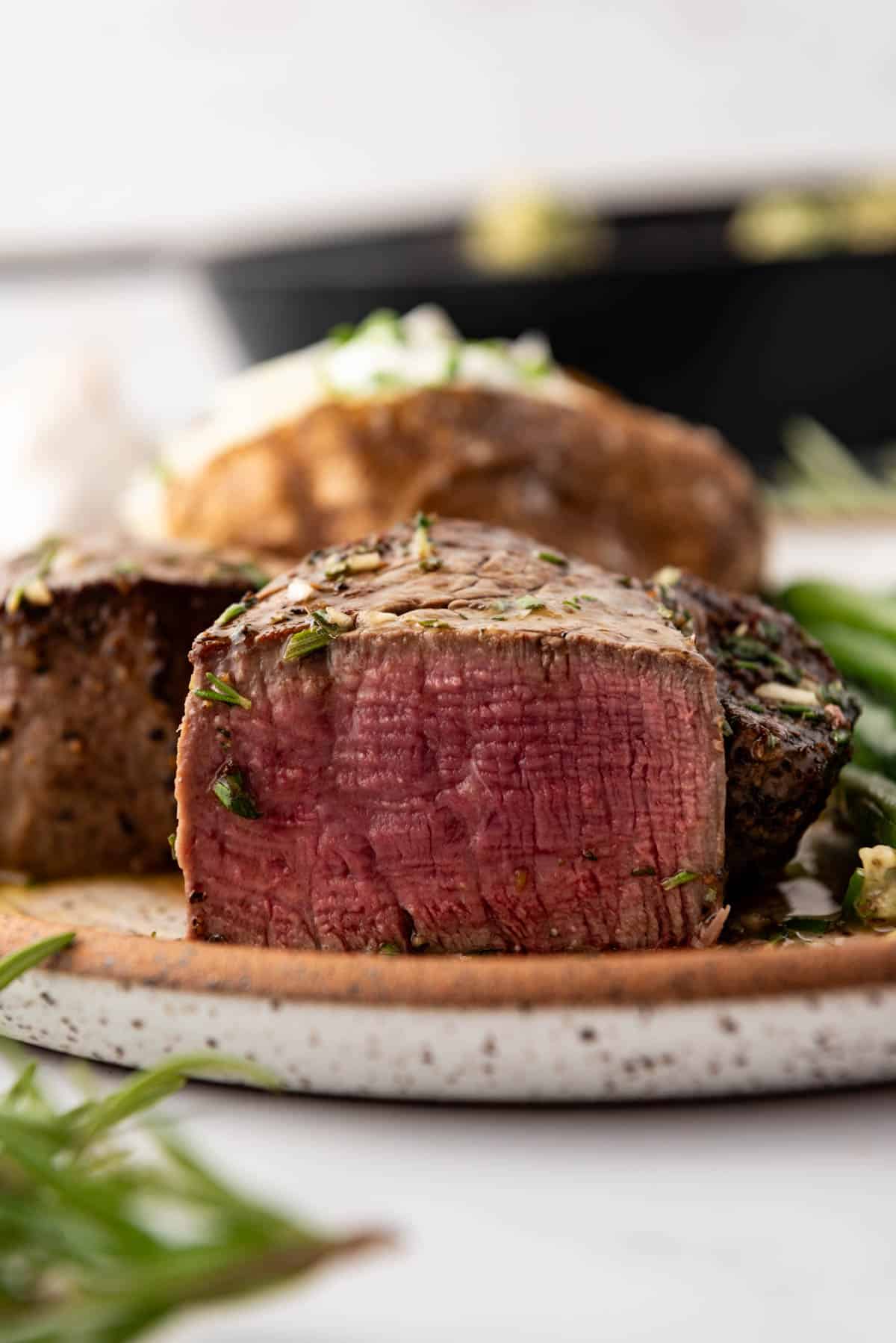
Table of Contents
- Choosing the Right Cut of Meat
- Properly Seasoning the Filet Mignon
- What You’ll Need
- How to Make Filet Mignon
- Understanding Internal Temperature for Filet Mignon
- Tips For Achieving The Perfect Medium Rare Doneness
- Recipe FAQ’s
- Best Sides for Filet Mignon
- More Restaurant-Quality Dinner Recipes
- Perfect Filet Mignon Recipe Recipe
Cooking the perfect filet mignon can be a daunting task, but with the right technique and tips, you can achieve a perfectly cooked and deliciously tender steak every time. I’m sharing all the secrets for the best filet mignon so that you are ready for special occasions like Valentine’s Day, holidays, or any time you get the craving for a good juicy steak!
Whether you are having dinner guests or just dinner for two for a date night from home, a mouthwatering cut of perfectly seared filet mignon with garlic herb butter is the perfect recipe for a delicious evening. It is the most tender cut of beef and the best way to cook it is to not go crazy with seasonings but to focus on your technique and cooking times.
This celebratory cut of meat can be pricey, but the unbelievably tender texture melts in your mouth when prepared properly. And it’s really quite easy to achieve a restaurant quality steak with just a handful of ingredients and a heavy bottomed pan.
I like to serve it with a little mound of garlic herb butter melting over the top, but really all you need is salt & pepper to season the meat. Spoon some melted butter infused with a sprig of two of rosemary and garlic cloves while the filet mignon is finishing in the pan and you’ll have a dinner you can be proud of.
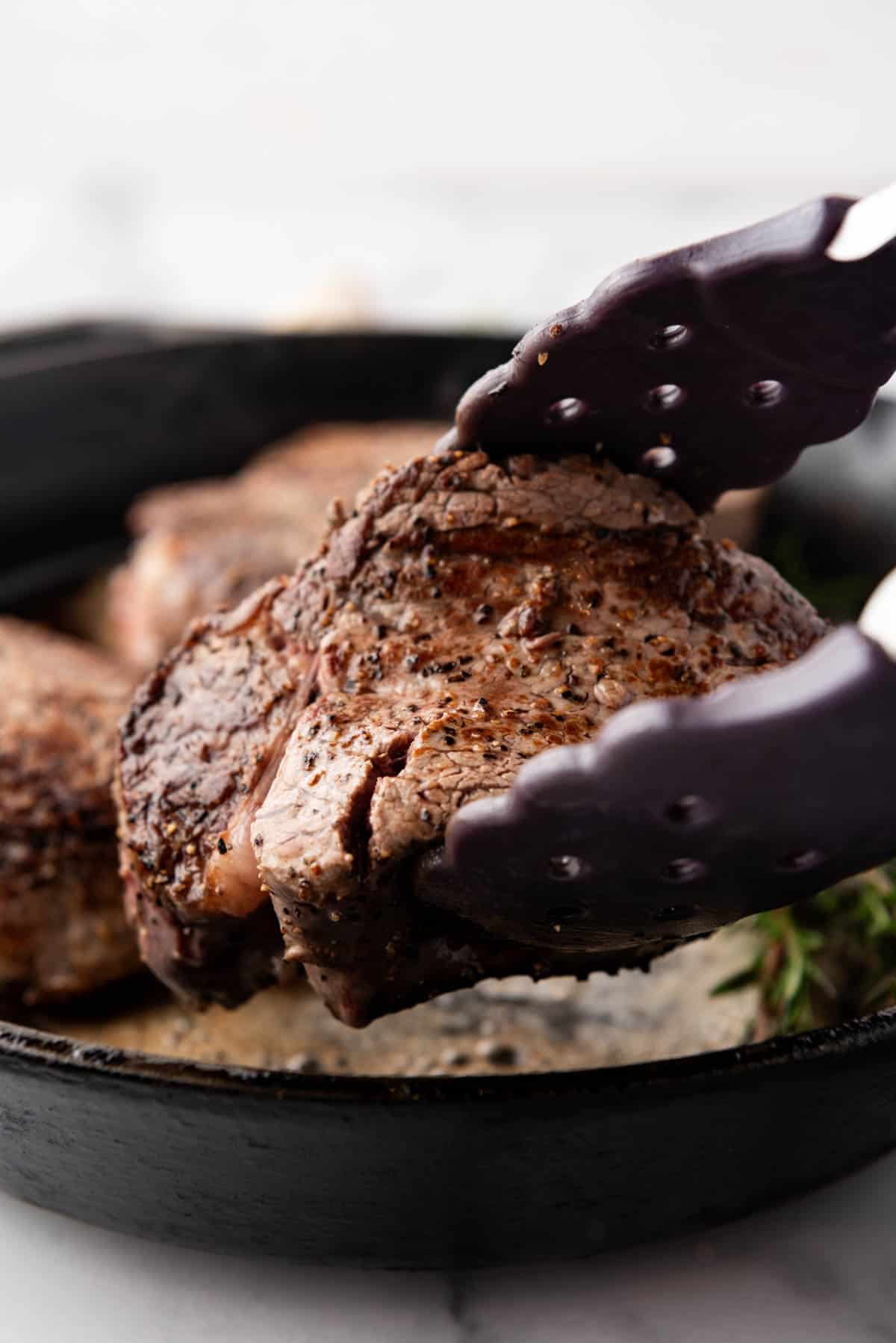
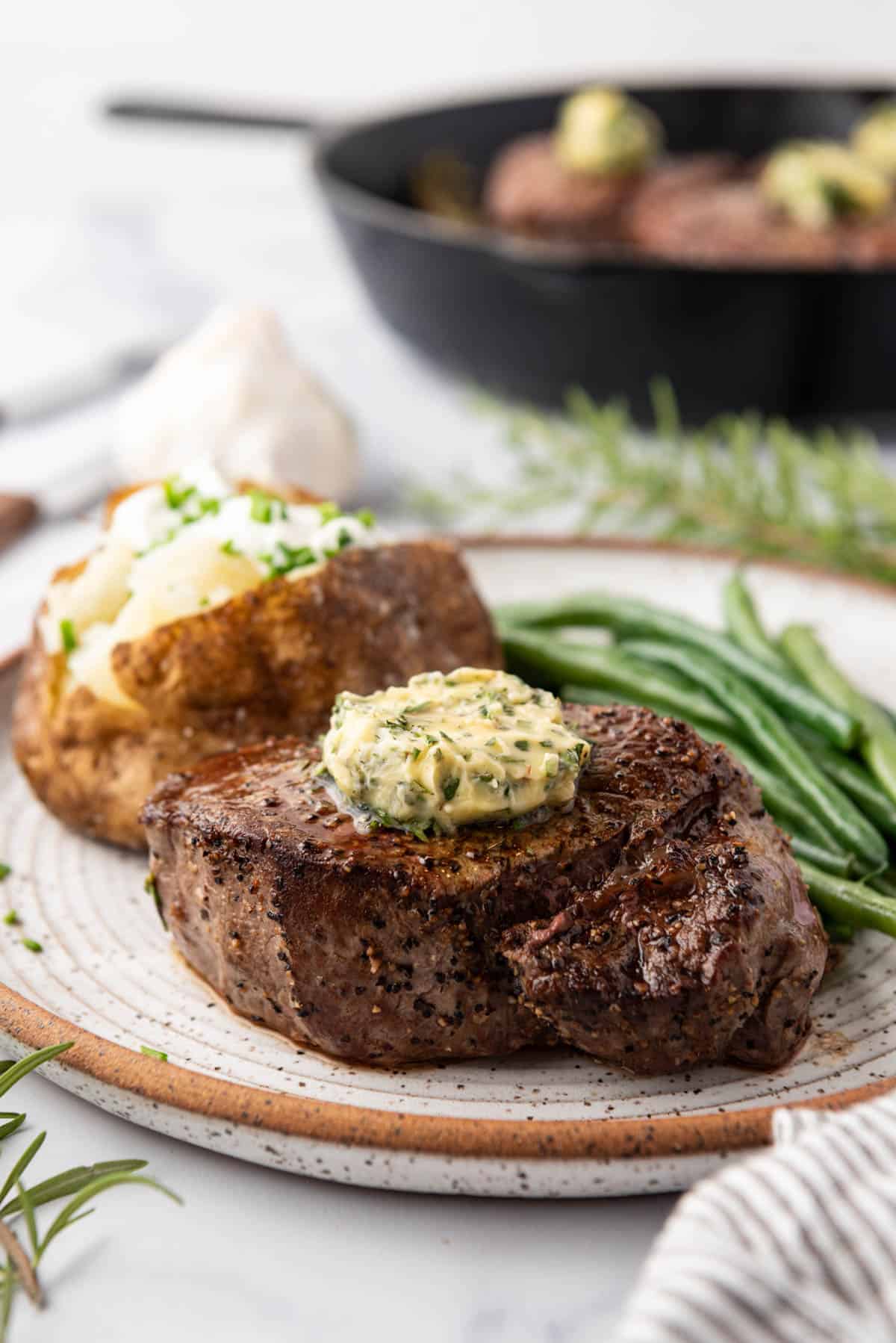
Choosing the Right Cut of Meat
- Appearance: Look for beef tenderloin steaks that have a bright red color. Avoid steaks with a brownish tint, as this may indicate aging or spoilage. Filet mignon won’t be as marbled as a ribeye or New York strip steak, so you don’t need to worry about that here. The steak should be firm to the touch and have a good bounce back when pressed. Avoid steaks that feel mushy or excessively soft.
- Thickness: Choose a steak that is at least 1.5 to 2 inches thick. Thicker steaks are easier to cook to perfection without overcooking the interior.
- Grade: Choose a higher grade of beef if possible. Prime grade is the highest quality, followed by Choice and Select. Prime grade filet mignon will likely be more expensive but may offer a more tender and flavorful experience.
- Price: While not always a strict indicator of quality, I would be wary of filet mignon priced significantly lower than others. Because this is such a simple meal where the flavor of the beef is the most important thing, this is a case where you get what you pay for. Extremely low prices may indicate lower quality or improper handling.
When in Doubt – Ask the Butcher
Don’t hesitate to ask your butcher for advice. A good butcher can provide information on the origin, grade, and characteristics of the filet mignon they have available.
Properly Seasoning the Filet Mignon
- Pat dry. Use paper towels to pat the filet mignon steaks dry. Moisture on the surface of the meat can interfere with searing and caramelization, which is important for developing that succent crust that holds all the juices inside.
- Season with salt & pepper. Generously season both sides of the filet mignon with kosher salt and freshly ground black pepper. The salt helps to enhance the meat’s natural flavors, while pepper adds just a bit of kick. Nobody wants a bland steak.
- Optional additions. If you want to add even more flavor, you can include other dry seasonings or herbs. Common choices include garlic powder, onion powder, or a steak seasoning blend. However, with filet mignon, it’s often best to keep it simple to let the meat shine.
- Let the steak rest. Allow the seasoned filet mignon to rest for a few minutes before cooking. This gives the salt some time to penetrate the meat.


What You’ll Need
- Filet Mignon – The star of the show! Make sure to pull out your filet mignon from the fridge 30 minutes before you want to start cooking it so it cooks evenly.
- Coarse Kosher Salt & Freshly Ground Black Pepper – The dynamic duo is all you need to season your filet mignon. Don’t even think about touching that Montreal steak seasoning, which is too overpowering for this premier and tender cut of meat.
- Olive Oil – Helps sear the steaks in the hot cast iron pan.
- Salted Butter – This is both for finishing the steak and for the compound butter that I like to make to go with our filet mignon.
- Garlic – Use fresh garlic for making the compound butter and for adding to the pan at the end.
- Fresh Rosemary – I like to chop up some fresh rosemary to make a compound butter for topping the filet mignon when it is done, but you will also want a couple of sprigs to toss in the pan to finish the steaks. It will infuse the pan juices and butter and provide that little something extra that makes the crust of the steak taste so good!
- Additional Herbs (Optional) – If I happen to have extra herbs on hand like fresh oregano, tarragon, thymes or parsley, I will sometimes chop those up with the rosemary to add to my compound butter.
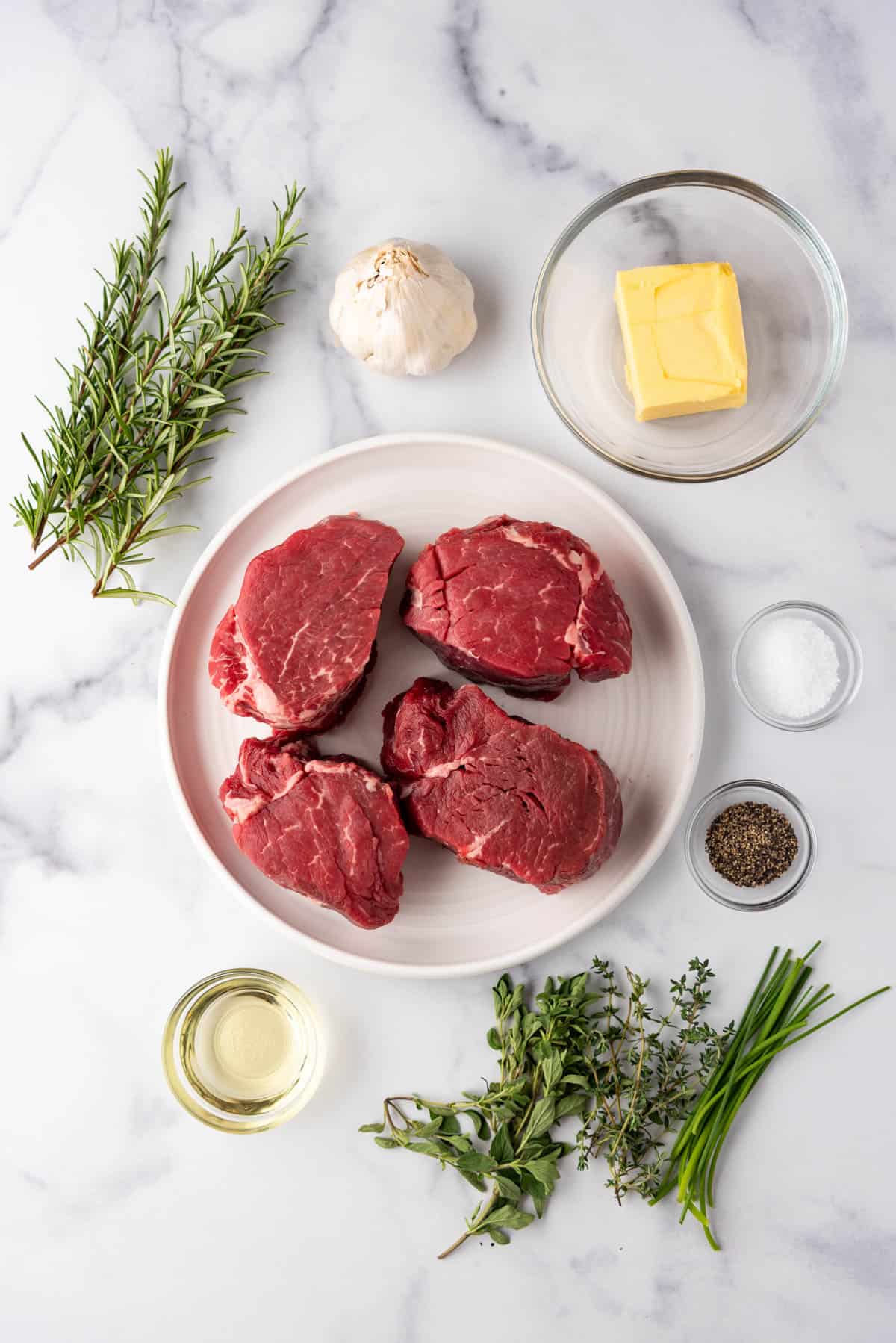
How to Make Filet Mignon
- Make the garlic herb compound butter. Mash chopped garlic, coarse kosher salt, freshly ground black pepper, and finely chopped herbs into softened butter.
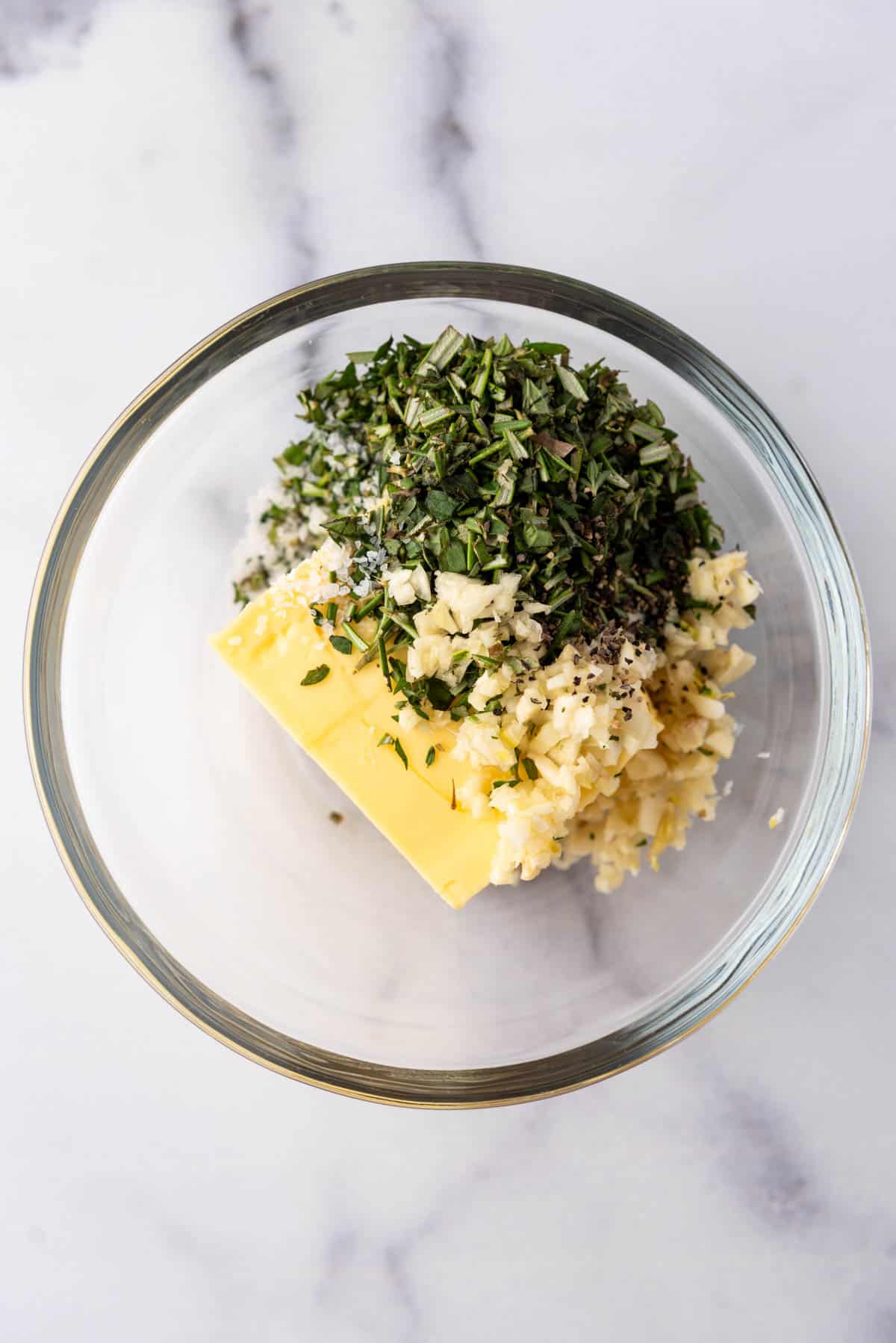
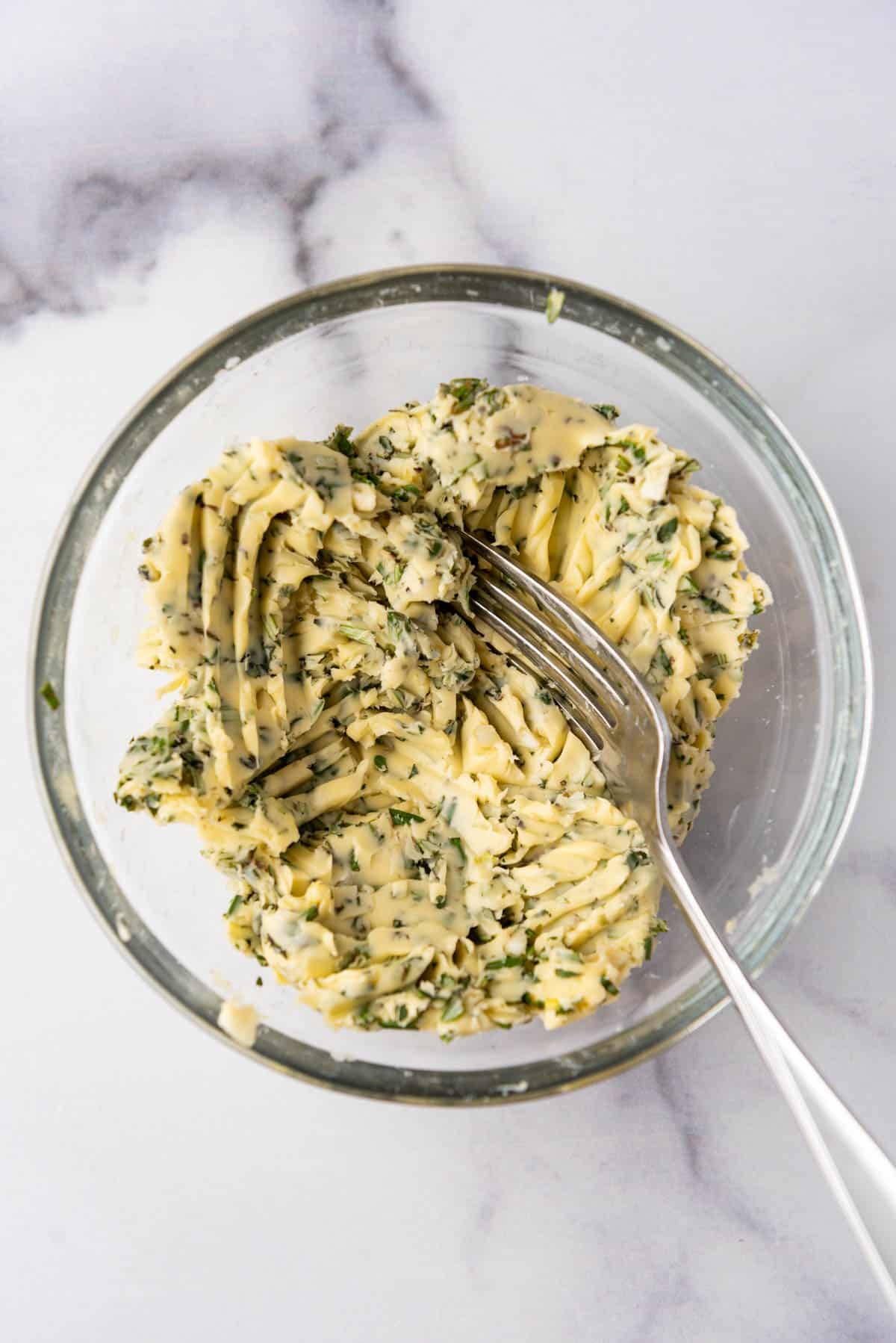
- Refrigerate. Transfer to a piece of plastic wrap and roll up into a log. Transfer to the fridge to chill. This also freezes well and is great to have on hand for adding to all kinds of dishes like chicken or fish, not just for topping your filet mignon.
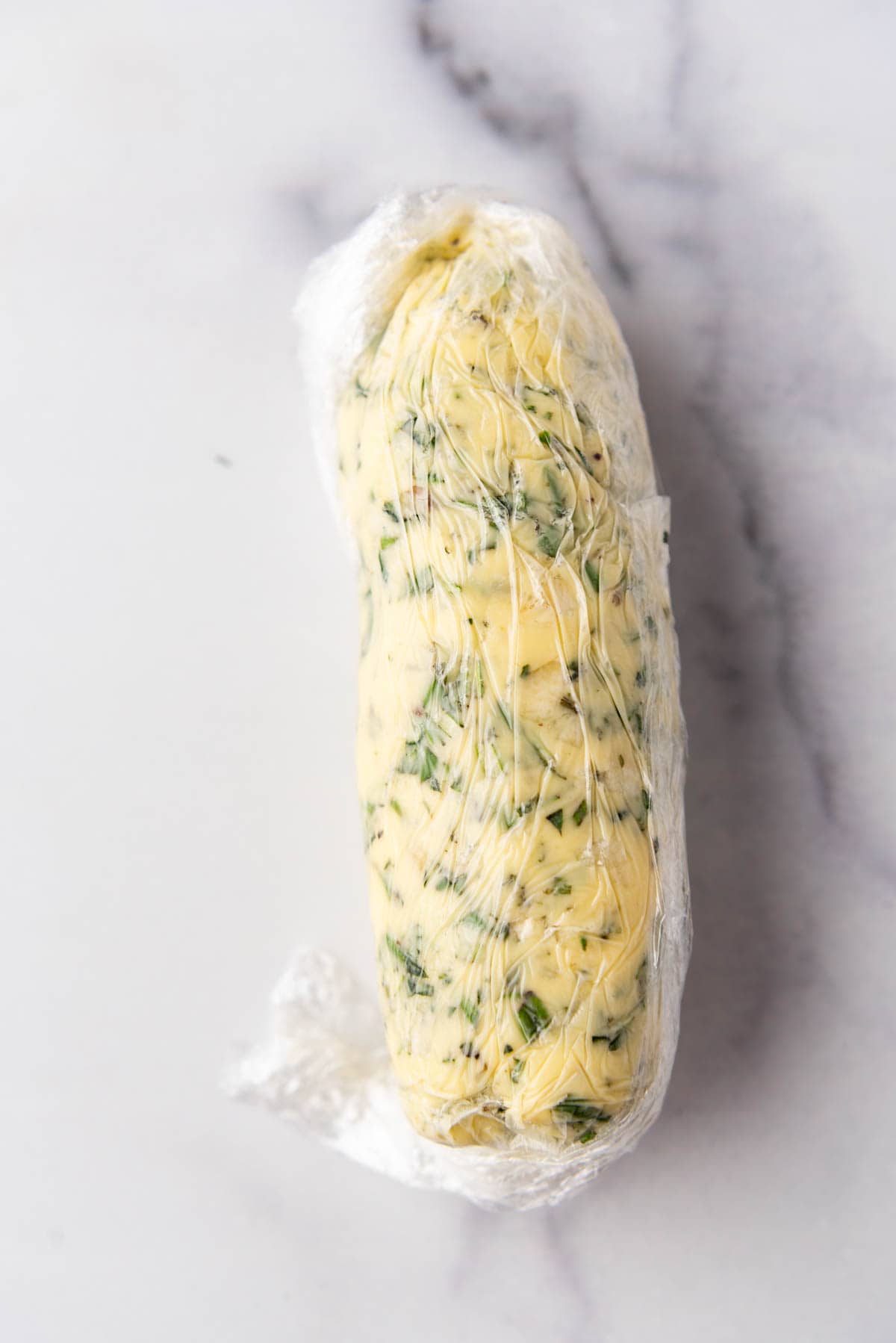
- Season the meat. Remove the steaks from the fridge for 30 minutes prior to cooking so they can come closer to room temperature. Season with salt and pepper on all sides. Preheat oven to 425°F.
- Sear on the stovetop. Heat an oven-safe skillet over high heat until very hot. Add oil. Once the oil starts to shimmer, carefully add the steaks to the hot pan. Sear the filet mignon without moving for 2 minutes on the first side. Once they have a good sear, use tongs to roll the steaks on their sides to sear the edges for 1 minute to seal in the juices. Flip the steaks to the other side and add half of the garlic herb butter to the pan along with a sprig or two of fresh rosemary. Spoon some of the butter as it melts over the steaks while searing for 1 minute on this side.

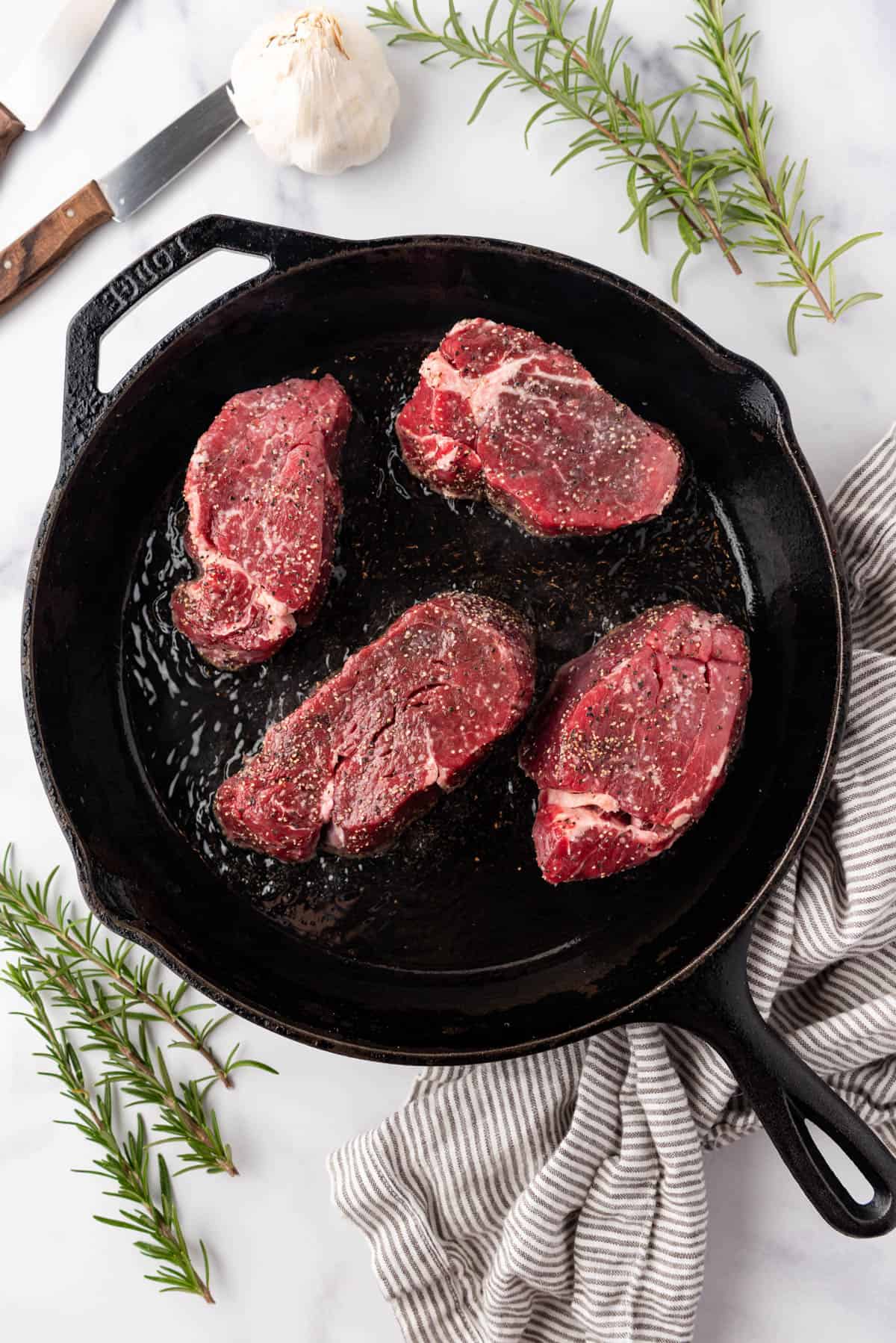
- Finish in the oven. Use hot pads to carefully transfer the skillet to the preheated oven. Bake for 4-10 minutes, depending on your desired degree of doneness. We like to pull ours at 125°F for medium-rare steaks. Keep in mind that the temperature of the steaks will continue to rise about 5°F after removing them from the oven. For rare steaks, cook them for 3-4 minutes (120 to 125°F), 5-6 minutes for medium-rare (125 to 135°F), 6-7 minutes for medium (135 to 145°F), and 8-9 minutes for medium-well (145 to 155°F). The size and thickness of the steak will affect the cook time and degree of doneness, so you may need to adjust up or down to achieve the cook you like.
Levels of Doneness for Filet Mignon
- Rare: 120-125°F (cool red center, very soft and tender)
- Medium-Rare: 125-135°F (warm red center, still very tender with a bit more resistance than rare – this is our personal favorite)
- Medium: 135-145°F (pink center with a hint of red, slightly firmer than medium rare)
- Medium-Well: 145-155°F (slightly pink center with more firmness and less juicy)
- Well-Done: 160° and above (fully cooked with little to no pink, tends to be drier and more tough)
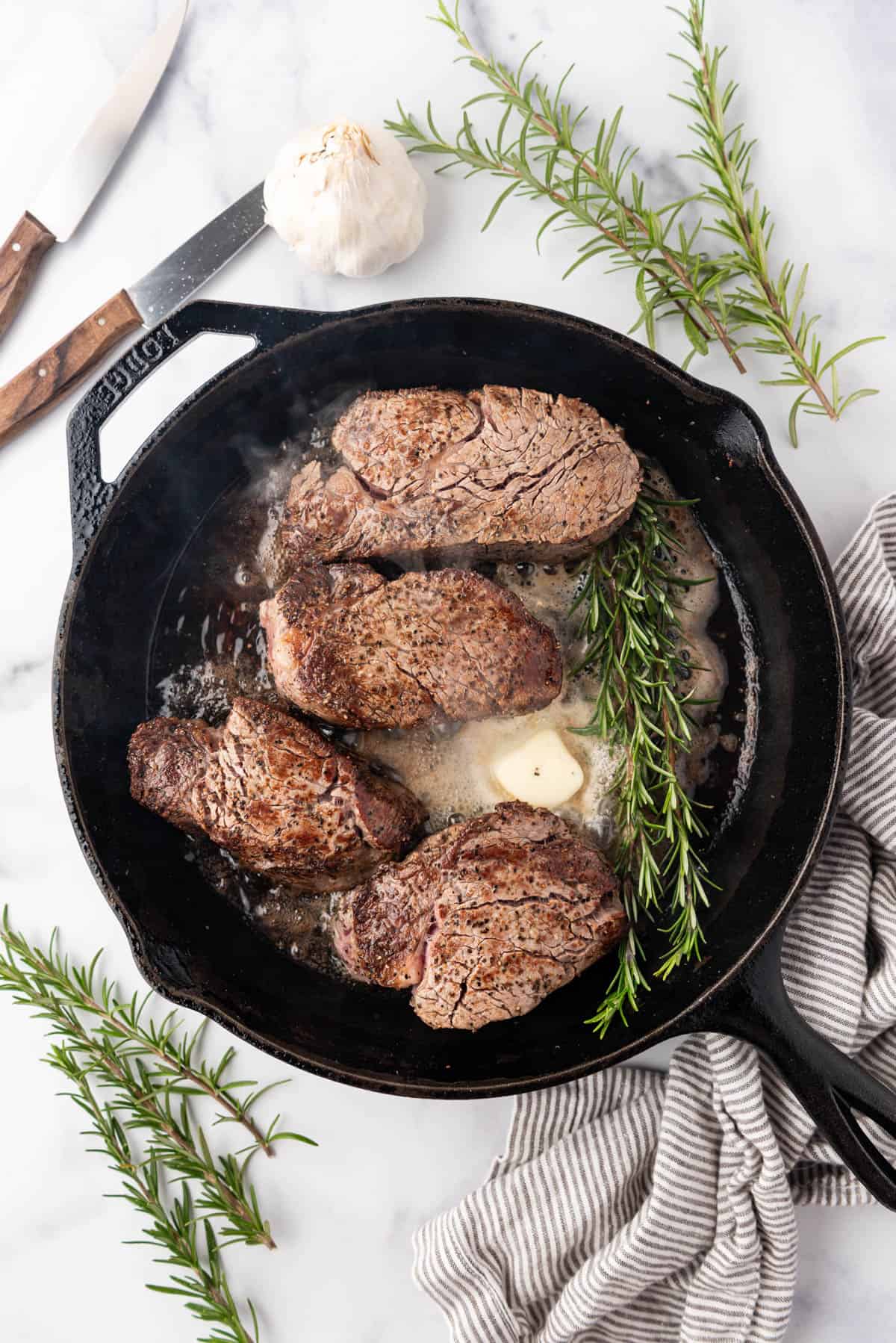
- Resting the steak. Remove the pan from the oven. Top each filet mignon with 1 Tablespoon of the remaining garlic herb butter and let them rest for 5-10 minutes before serving.
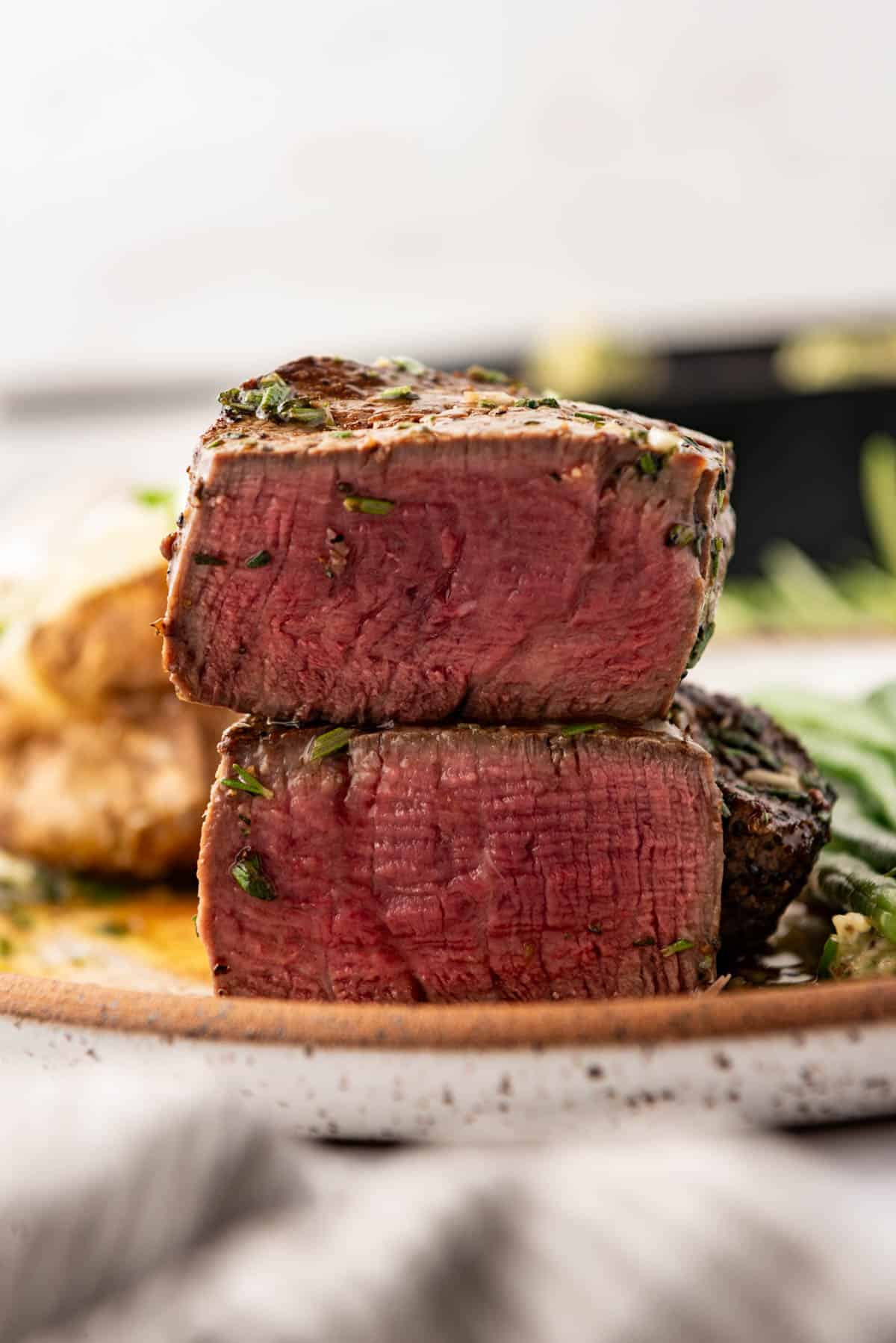
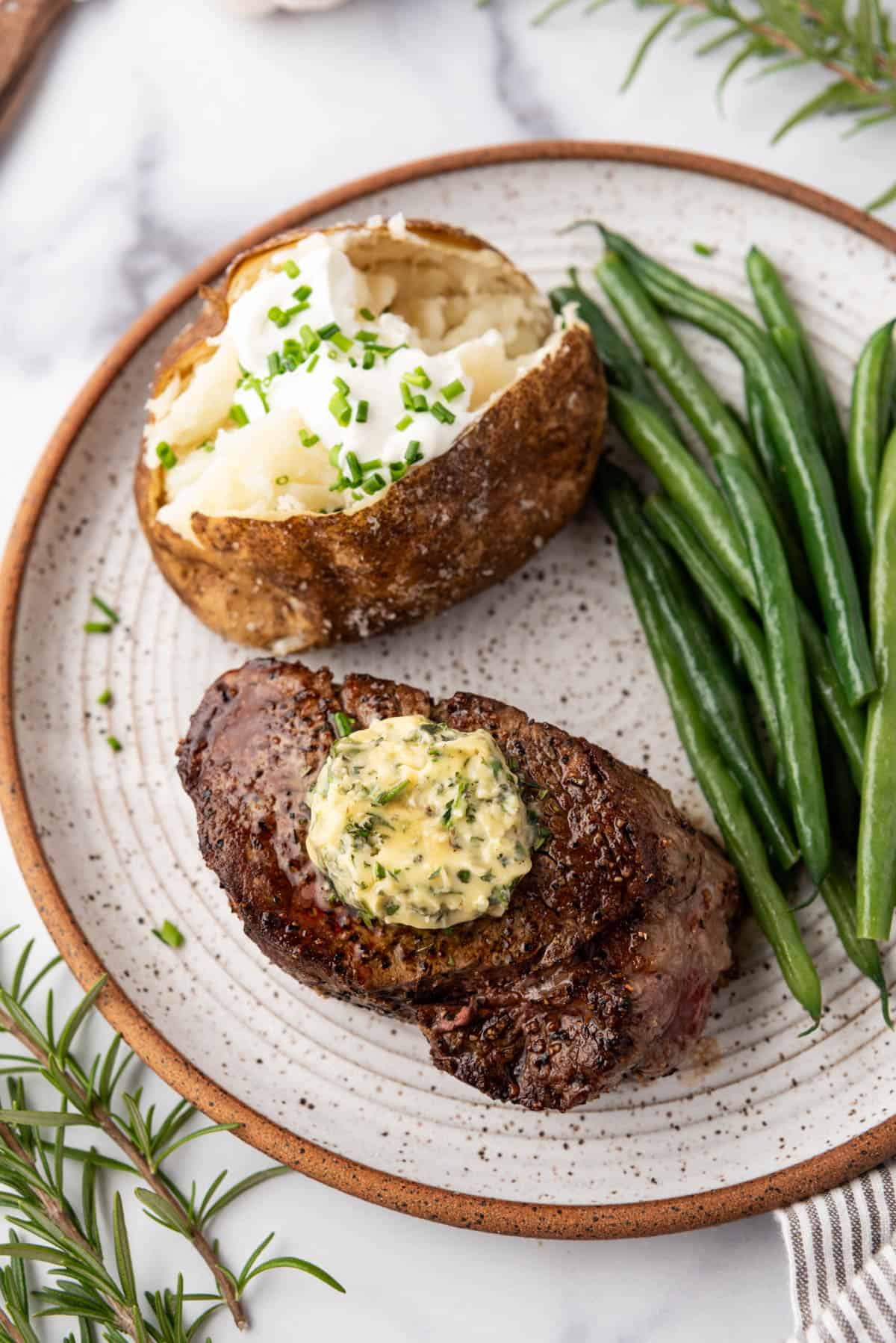
Understanding Internal Temperature for Filet Mignon
Monitoring the internal temperature allows you to achieve the desired level of doneness consistently. Cooking filet mignon to the right internal temperature is important to achieving a tender, juicy result and overcooking can result in a dry and tough texture, which would be a shame for this expensive premium cut of meat. By using a meat thermometer to measure the internal temperature, you can avoid overcooking and wasting this high-quality cut, ensuring a perfectly cooked steak.
The most accurate way to check the internal temperature of filet mignon is by using a meat thermometer. Insert the meat thermometer into the thickest part of the filet mignon. Wait for the thermometer reading to stabilize. This usually takes a few seconds for instant-read thermometers. If your filet mignon is large or irregularly shaped, consider checking the temperature in multiple spots to ensure even cooking.
Keep in mind that the internal temperature of the steak will continue to rise slightly during the resting period after cooking. Plan for this when determining the target temperature.
Tips For Achieving The Perfect Medium Rare Doneness
- Let the steak sit out at room temperature for 30-60 minutes before cooking it.
- Make sure the pan is searing hot before adding the filet mignon, then don’t move it until it is time to flip it!
- Finish in the oven.
- Use a meat thermometer to check for doneness.
- Transfer the filet mignon to a cutting board when it is 3 to 5°F from your target temperature. The internal temp will continue to rise while the meat rests.
Recipe FAQ’s
Aging: Some people prefer aged steaks for a more intense flavor. If your butcher offers aged filet mignon, inquire about the aging process and choose according to your taste preferences.
Filet mignon comes from the tenderloin, which is a long, narrow muscle located along the spine of the cow. The tenderloin is a non-weight-bearing muscle, and this lack of exercise contributes to its tenderness. The filet mignon is a specific cut from the smaller end of the tenderloin. It is known for its exceptionally tender texture and mild flavor, making it one of the most prized and sought-after cuts of beef. The tenderloin extends into two portions: the larger, thicker end known as the sirloin end or butt end, and the smaller, thinner end known as the filet end or tail. The filet mignon is typically cut from the smaller end, closer to the ribs.
Since we are using a pan-seared, oven finish method for our filet mignon recipe, you need a pan that can go straight from the stove to the oven. A cast-iron skillet works perfectly. It should also be able to handle high heats in order to properly sear the outside of the filet mignon to develop a crust.
Best Sides for Filet Mignon
Think classic steakhouse sides and offerings when planning your dinner menu for what to serve with filet mignon. A starch and some steamed or roasted vegetables go perfectly with the rich, succulent meat.
- Salt Crusted Baked Potatoes with butter, sour cream and chives
- Duchess Potatoes
- Syracuse Salt Potatoes
- My Best Baked Macaroni and Cheese
- Oven Roasted Broccoli with Garlic, Parmesan and Lemon
- Bacon Wrapped Asparagus
- Tender Roasted Green Beans
- Best Mushroom Risotto

More Restaurant-Quality Dinner Recipes
- Chicken Madeira
- Beef Wellington
- Creamy Mushroom Risotto
- Easy Creamy Chicken Marsala
- Outback Alice Springs Chicken
Chicken & Poultry
Marry Me Chicken
Beef & Lamb
Grilled Ribeye Steak
Chicken & Poultry
Creamy Garlic Chicken
Did you make this recipe?
Let me know what you thought with a comment and rating below. You can also take a picture and tag me on Instagram @houseofnasheats or share it on the Pinterest pin so I can see.
Perfect Filet Mignon Recipe
Equipment
Ingredients
Garlic Herb Butter
- 4 Tablespoons salted butter softened
- 1 Tablespoon chopped fresh rosemary
- 1 Tablespoon chopped fresh oregano or other herbs like thyme, tarragon, or chives
- 2 cloves garlic minced
- Salt & pepper to taste
Filets
- 4 (8 to 10-ounce) beef tenderloin filets about 1 ½ to 2-inches thick
- 2 teaspoons kosher salt
- 1 teaspoon freshly ground black pepper
- 2 Tablespoons vegetable oil canola oil, or avocado oil
- 4 Tablespoons salted butter cut into chunks
- 2 cloves garlic crushed with the back of a knife
- 2-3 whole sprigs rosemary

Instructions
- Mash the softened butter with the minced garlic, chopped herbs, and salt and pepper until the garlic and herbs are evenly mixed in. Transfer to a small piece of plastic wrap and roll it up into a log. Chill the compound butter in the fridge until ready to use.4 Tablespoons salted butter, 1 Tablespoon chopped fresh rosemary, 1 Tablespoon chopped fresh oregano, 2 cloves garlic, Salt & pepper
- Remove the filet mignon steaks from the fridge 30-60 minutes before cooking so they can come closer to room temperature. Season with salt and pepper on all sides. Preheat oven to 425°F.4 (8 to 10-ounce) beef tenderloin filets, 2 teaspoons kosher salt, 1 teaspoon freshly ground black pepper
- Heat a cast iron skillet or other oven-safe pan over high heat until very hot. Add oil. Once the oil starts to shimmer, carefully add the steaks. Sear the meat without moving it for 2 minutes so it can develop a good crust. Use tongs to carefully roll the steaks on their sides to sear the edges for 1 minute. Flip the steaks to the other side and add 4 Tablespoons of butter to the pan along with a sprig or two of fresh rosemary and the crushed garlic cloves. Spoon some of the butter as it melts over the steaks while searing for 1 minute on the second side.2 Tablespoons vegetable oil, 4 Tablespoons salted butter, 2 cloves garlic, 2-3 whole sprigs rosemary
- Transfer the skillet to the oven. Bake for 4-10 minutes, depending on your desired degree of doneness. We like to pull ours at 125°F for medium-rare steaks. Keep in mind that the temperature of the steaks will continue to rise about 5 degrees after removing them from the oven. For rare steaks, cook them for 3-4 minutes (120 to 125°F), 5-6 minutes for medium-rare (125 to 135°F), 6-7 minutes for medium (135 to 145°F), and 8-9 minutes for medium-well (145 to 155°F). The size and thickness of the steak, and the temperature they started at if they were still chilled from the fridge will affect the cook time and degree of doneness, so you may need to adjust the finish time up or down to achieve the cook you like.
- Remove the steaks from the oven and top each filet mignon with 1 tablespoon of the compound herb butter. Let them rest for 5-10 minutes before serving.

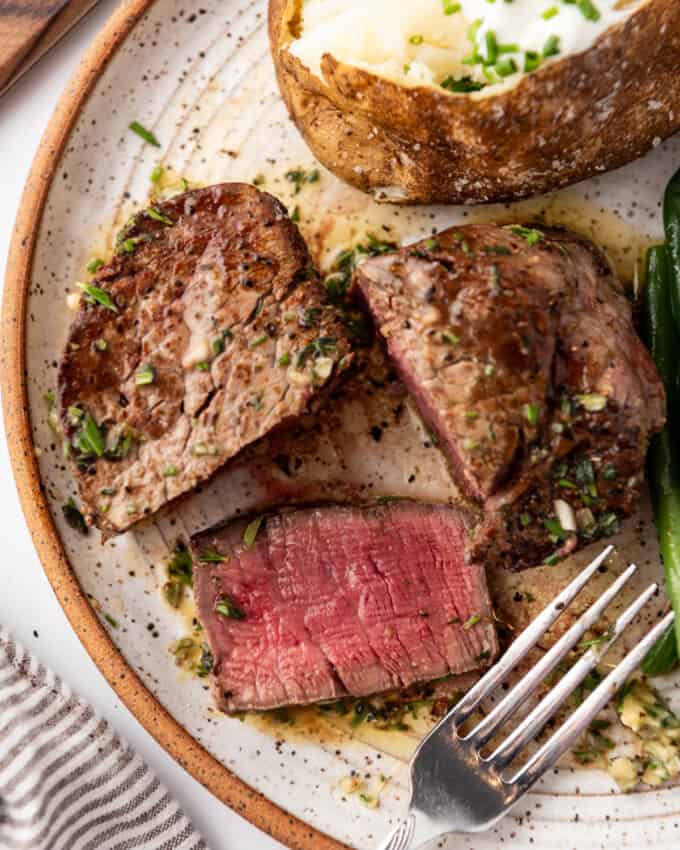
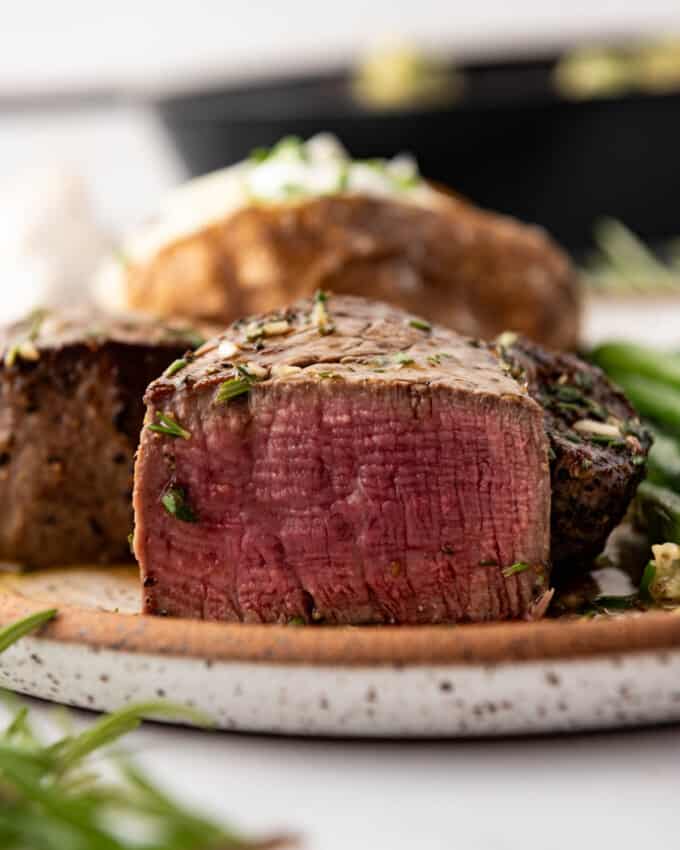
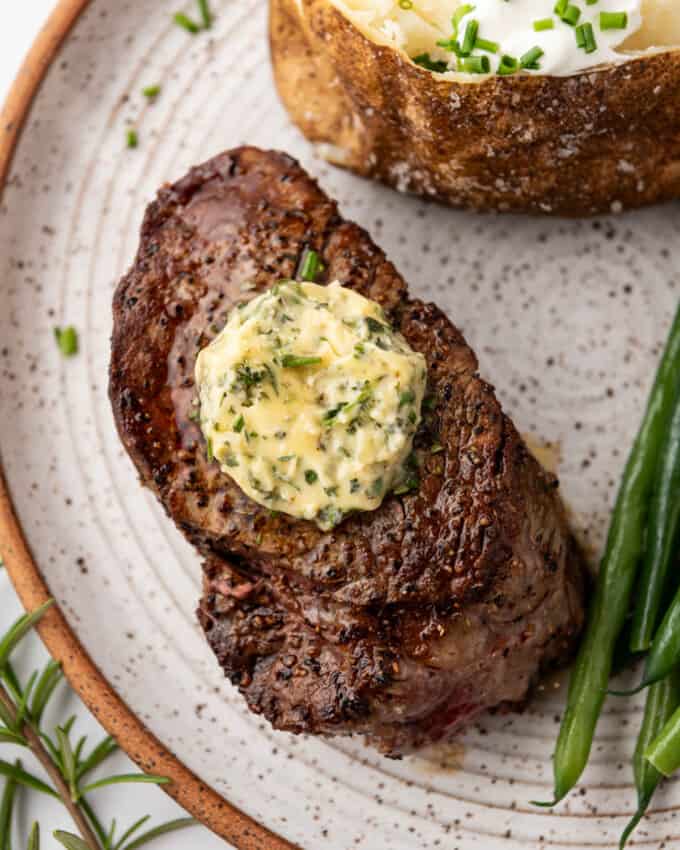
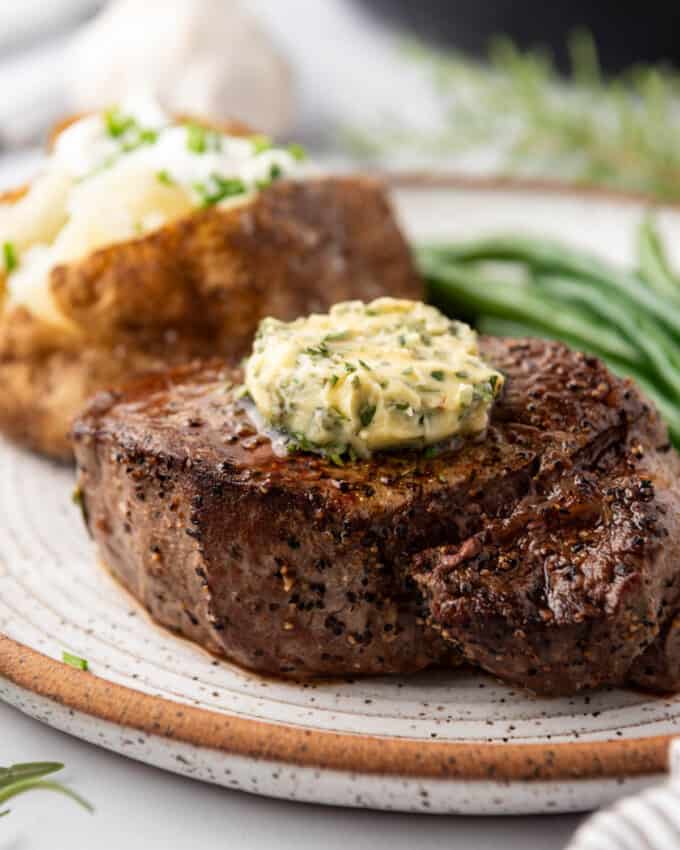
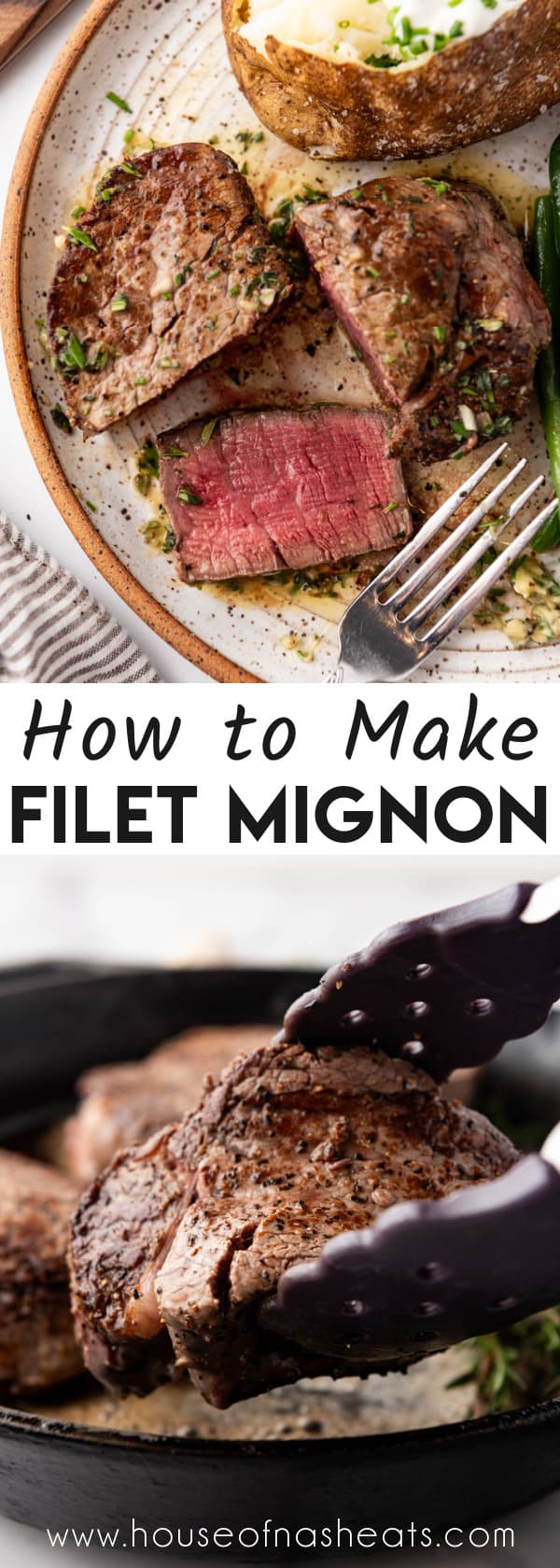
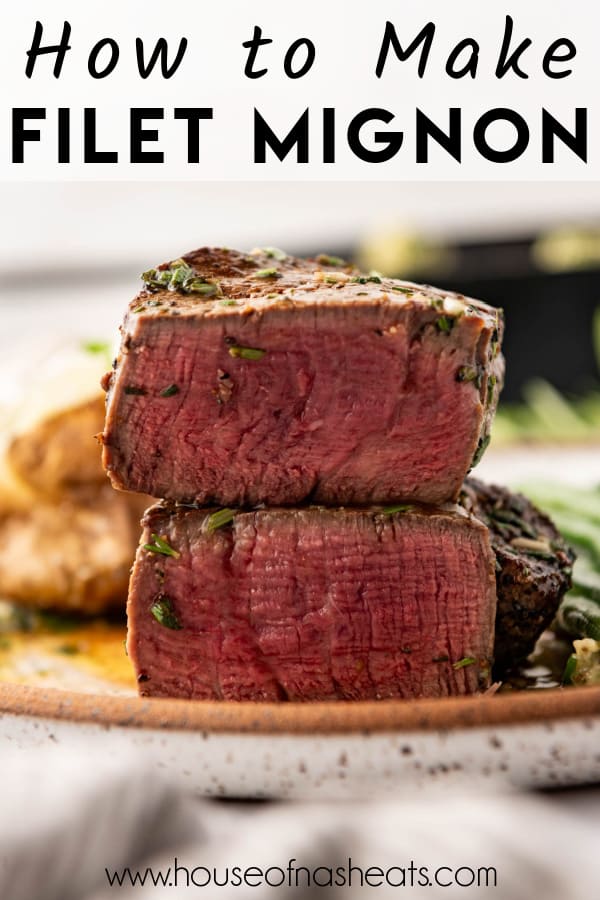
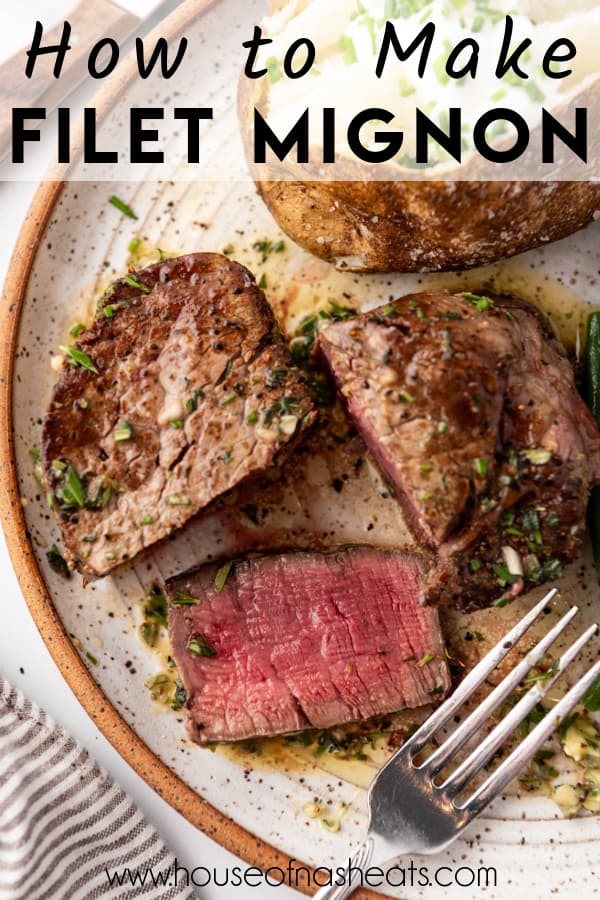


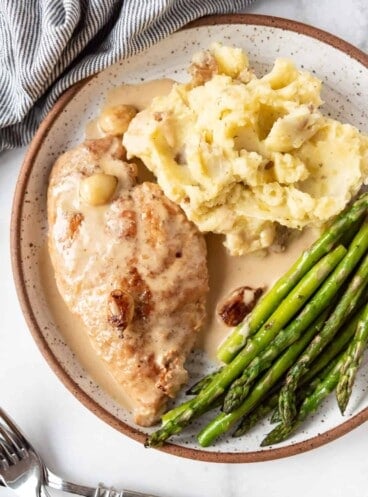






It was perfect.
I was looking for a good recipe to follow and I could not have picked a better one, thank you!
Oh great! I am glad you found this!
Relatively EASY and tastes wonderful! I will make again.